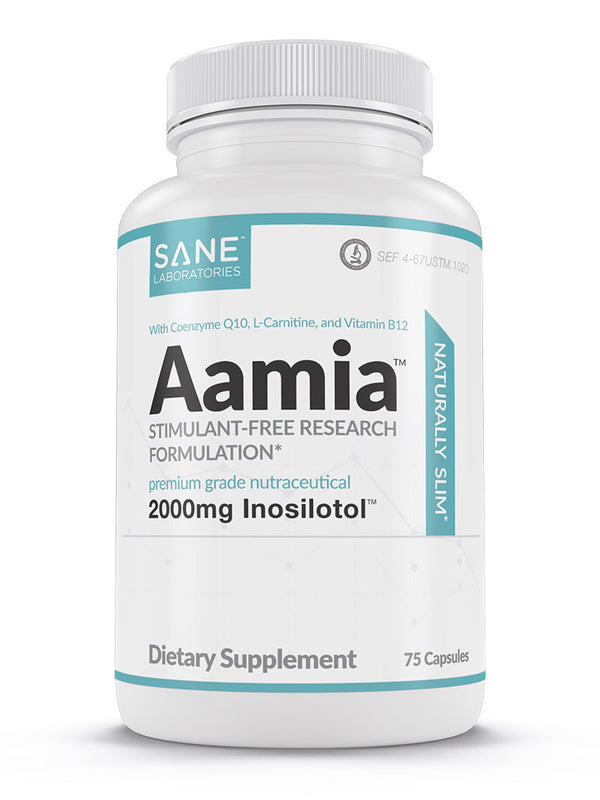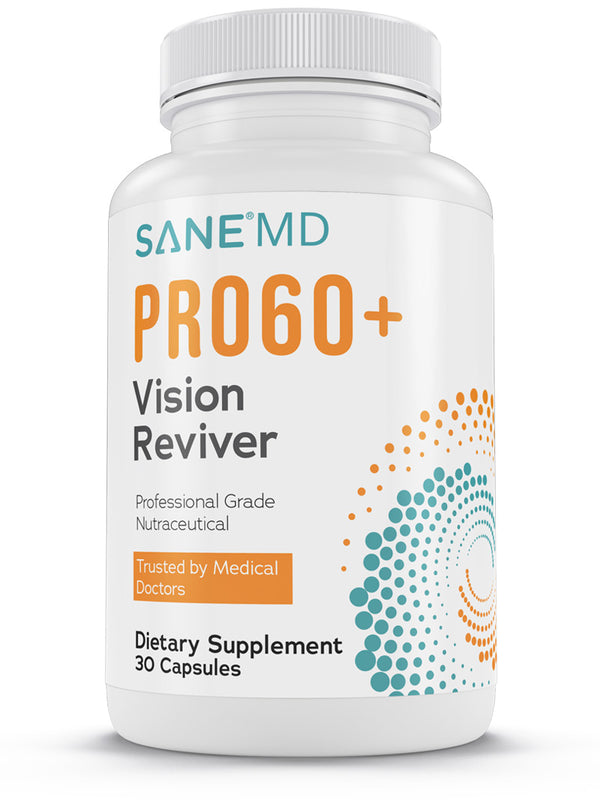Osteoarthritis (OA) is something millions of people deal with every day, making it the most common form of arthritis. It’s often called degenerative joint disease or “wear-and-tear” arthritis. (OA is not the same as rheumatoid arthritis, which is an autoimmune condition.) Osteoarthritis affects the entire joint, not just the cartilage, leading to bone changes, connective tissue deterioration, and inflammation of the joint lining.
When it comes to managing osteoarthritis, knowing the symptoms and causes is key to feeling your best.
What are the Symptoms of Osteoarthritis?
If you’ve been told you have osteoarthritis, some of these symptoms might sound familiar as they are among the most common symptoms of osteoarthritis:
-
Joint Pain: That deep ache or sometimes a sharp pain in your joints, especially after you’ve been moving around a lot. For many, this shows up in the knees, but it can also impact your hips or other joints. Rest often helps, but the pain can come back as soon as you’re up and about again.
-
Stiff Joints: Ever notice how stiff your joints feel first thing in the morning or after sitting still for a while? That stiffness can last for a bit but usually loosens up as you get moving.
-
Swelling: It’s not unusual for joints to look a little swollen or puffy due to extra fluid around them.
-
Loss of Flexibility: Struggling to move your joints through their full range of motion? It’s common with osteoarthritis to notice that certain movements become more difficult or limited.
-
Grating Sensation: Sometimes, you might feel or even hear a kind of crackling or grinding when you move the joint. That’s called crepitus and can be a telltale sign of OA.
-
Bone Spurs: These are hard bumps that can form around your joints due to bone overgrowth and can be pretty uncomfortable.
The severity of these symptoms can vary a lot. Some days may be better than others, but flare-ups can make everyday activities harder and impact your quality of life.
What Causes Osteoarthritis?
Osteoarthritis occurs when the protective joint cartilage between joints starts to break down, leading to discomfort and decreased joint space. Here’s a look at the key contributors to this cartilage wear-and-tear:
-
Age: The longer you use your joints, the more wear they experience. OA commonly impacts older adults for this reason.
-
Joint Injuries: Past injuries, like fractures or ligament tears, can speed up cartilage deterioration.
-
Genetics: Unfortunately, osteoarthritis can run in families. If your parents or grandparents had it, you might be more likely to develop it.
-
Obesity: Being obeseor just carrying excess weight puts stress on weight-bearing joints like the knees and hips, accelerating the breakdown of cartilage.
-
Repetitive Stress: Jobs or hobbies that involve repetitive movements, like kneeling or lifting, can increase the risk of OA over time.
-
Bone Deformities: Some people are born with joint abnormalities or defective cartilage that make them more susceptible to OA.
-
Gender: Women are more likely than men to develop osteoarthritis, particularly after menopause, possibly due to hormonal changes.
Living with OA doesn’t mean you have to resign yourself to pain. In the rest of this article, you’ll find 18 natural remedies to help relieve pain associated with osteoarthritis symptoms. From dietary changes and targeted exercises to other lifestyle adjustments, there are plenty of ways to take control of your condition and work towards a more comfortable, active life.
Lifestyle Tweaks to Help Relieve Osteoarthritis Symptoms
Managing osteoarthritis goes beyond just focusing on diet and exercise. It often involves a few simple yet effective lifestyle changes that can help improve joint movement, ease discomfort, enhance mobility, and improve your overall quality of life. Here are five practical adjustments you can make to help manage osteoarthritis symptoms:
1. Prioritize Quality Sleep
Getting restorative sleep plays a big role in helping your body heal and recharge. Try to set a consistent sleep schedule by heading to bed and waking up at the same time every day. Establish a calming bedtime routine—whether it’s reading a few chapters of a book, listening to soothing music, or practicing deep breathing exercises.
Also, invest in a supportive mattress and pillows that promote proper alignment. This can alleviate joint pain during the night, ensuring you wake up feeling more refreshed.
2. Use Assistive Devices
Assistive devices, such as canes, walkers, and braces, can make a world of difference by reducing the strain on your joints. These tools provide extra support, making everyday tasks feel more manageable and reducing discomfort. Consider adding handrails in the bathroom or switching to ergonomic kitchen tools that are easier on your hands and wrists.
If you’re unsure which devices are best for you, consulting with an occupational therapist can help you find what works best for your needs and prevent joint injury.
3. Practice Good Posture
Maintaining good posture can significantly reduce joint stress, preventing further wear and tear. When sitting, keep your back straight, shoulders relaxed, and feet flat on the ground. If you’re standing, try to distribute your weight evenly and avoid slouching.
Make it a habit to check your posture throughout the day, especially if you spend long hours sitting at a desk. Simple reminders can help minimize joint strain over time.
4. Stay Hydrated
Hydration is essential—not only for your general health but also for maintaining healthy joints. Proper hydration keeps your joints lubricated, making movement smoother and less painful. Aim to drink at least 8 glasses of water a day, but you might need more depending on your activity level and environment.
Keep a water bottle nearby to encourage frequent sips, and if you’re looking for a little variety, try herbal teas or water infused with fruits.
5. Organize Your Environment
Rearranging your home to make it more arthritis-friendly can take a lot of strain off your joints. Keep frequently used items within easy reach to avoid bending or stretching, and consider adding nonslip rugs and grab bars to improve safety and stability.
Even small changes in your living space can make daily tasks easier and reduce unnecessary stress on affected joints.
By incorporating these lifestyle tweaks, you can effectively manage osteoarthritis symptoms and improve your day-to-day experience. Each adjustment can bring relief and support your journey toward feeling healthier and more comfortable.

Dietary Changes for Osteoarthritis Symptoms
When it comes to managing osteoarthritis, what you eat can make a significant difference in reducing inflammation and promoting joint health. Dietary changes can support the health of weight-bearing joints like the hip joint, helping to alleviate discomfort and support your body’s healing process.
Here are five dietary changes that can help ease osteoarthritis symptoms:
1. Increase Omega-3 Fatty Acids
Omega-3 fatty acids are known for their potent anti-inflammatory properties, making them a great addition to your diet for managing joint pain and stiffness. Incorporating more fatty fish like salmon, mackerel, and sardines into your meals can be particularly beneficial. If you're looking for plant-based options, chia seeds, flaxseeds, and walnuts are excellent alternatives.
If you find it difficult to get enough omega-3s through food alone, a high-quality fish oil supplement can provide a concentrated dose to help keep inflammation at bay.
2. Add Anti-Inflammatory Spices
Certain spices, especially turmeric and ginger, are celebrated for their anti-inflammatory effects. Turmeric contains curcumin, a compound that can significantly reduce inflammation in the body. Ginger is another natural remedy that helps relieve joint pain and swelling.
Try adding these spices to your meals, sprinkle them in smoothies, or enjoy them in teas for an easy way to give your meals a health-boosting, flavorful twist.
3. Choose Healthy Fats
Incorporating healthy fats into your diet can further support your body’s anti-inflammatory response. Fats found in avocados, olive oil, and nuts can help reduce inflammation and protect your joints. Use extra virgin olive oil for cooking or dressing your salads, and don’t hesitate to add avocado slices to sandwiches, salads, or even toast for a nutrient-dense boost.
Snacking on nuts and seeds or sprinkling them over your meals can also provide you with beneficial fats that support joint health.
4. Opt for Low-Fructose Fruits
Low-fructose fruits such as berries and citrus fruits are packed with antioxidants and vitamins that protect against joint damage. Blueberries, strawberries, and raspberries are loaded with nutrients that combat inflammation, while citrus fruits like oranges and grapefruits are excellent sources of vitamin C, which is essential for collagen production.
You can enjoy these fruits fresh, frozen, or blended into smoothies for a tasty, antioxidant-packed snack or addition to your meals.
5. Embrace Fermented Foods
Fermented foods are excellent for gut health, which is closely linked to reduced inflammation throughout the body. Probiotic-rich foods like sauerkraut, kimchi, and yogurt can help balance your gut microbiome and improve immune function, both of which play a role in managing osteoarthritis symptoms.
If you're not into fermented foods, probiotic drinks like kombucha and kefir can be easy and tasty ways to add these beneficial bacteria to your diet.
Incorporating these dietary changes can help you manage osteoarthritis symptoms while promoting better overall joint health. Start small, gradually making adjustments, and over time, you may notice improvements in your comfort and mobility.
Activities and Exercises to Relieve Osteoarthritis Symptoms
Staying active plays a crucial role in managing osteoarthritis, as it helps strengthen muscles, improve flexibility, and enhance joint movement, thereby reducing discomfort. By incorporating specific exercises into your routine, you can ease pain and boost mobility.
Here are four activity-based adjustments that can help relieve osteoarthritis symptoms:
1. Try Low-Impact Cardio
Low-impact cardiovascular exercises are a great way to keep your joints moving without adding extra strain. Activities like swimming and water aerobics are especially beneficial because the water’s buoyancy helps support your body, reducing pressure on the joints. Cycling is another excellent choice for getting your heart pumping without stressing your knees or hips.
Aim for at least 30 minutes of low-impact cardio 3-4 times a week to increase blood flow, keep joints lubricated, and improve joint movement. It can also help you lose weight.
2. Incorporate Strength Training
Strength training is essential for building muscle, which in turn supports and stabilizes your joints. Focusing on exercises that target major muscle groups—such as leg presses, squats, and resistance band workouts—can reduce stress on affected joints. Strengthening the muscles around your knees, hips, and shoulders helps take the load off your joints.
Start with lighter weights or resistance, gradually increasing as you build strength. Consider working with a trainer or physiotherapist to ensure you're using proper form and avoiding injury.
3. Practice Range-of-Motion Exercises
Range-of-motion exercises are designed to keep your joints flexible, preventing stiffness and improving mobility. Gentle stretches, shoulder rolls, and ankle circles are simple movements that can make a big difference in maintaining flexibility. Tai chi, with its slow, controlled movements, is another excellent option that combines stretching with relaxation and deep breathing.
Make it a point to perform range-of-motion exercises daily to keep your joints limber and help avoid stiffness.
4. Embrace Balance Training
Improving balance is key to reducing the risk of falls and enhancing overall body stability. Simple exercises, like standing on one leg or walking heel-to-toe, can work wonders for coordination. If you’re looking for something more structured, yoga is a fantastic option—it combines poses that improve balance with relaxation techniques that benefit both the body and mind.
Try to incorporate balance exercises into your routine at least twice a week to see noticeable improvements.
By integrating these activity-related changes into your life, you can better manage osteoarthritis symptoms while boosting your mobility and reducing discomfort. Always consult a healthcare professional before starting any new exercise program, and take joy in the journey towards stronger, healthier joints.
Mental and Spiritual Practices for Osteoarthritis
While physical changes like diet and exercise are essential for managing osteoarthritis, taking care of your mental and spiritual well-being is equally important. A positive outlook and emotional resilience can help reduce stress, which often worsens joint pain and inflammation. By focusing on practices that nurture your mind and spirit, you can improve your overall well-being as you navigate life with osteoarthritis.
Here are four mental and spiritual practices to support your osteoarthritis journey:
1. Practice Mindfulness Meditation
Mindfulness meditation is a powerful tool for reducing stress and promoting relaxation. By focusing on the present moment, you can help ease anxiety and cultivate a sense of calm. Find a quiet space where you feel comfortable, sit or lie down, and gently close your eyes. Focus on your breathing, noticing how your body feels with each inhale and exhale.
As thoughts or sensations arise, simply observe them without judgment, allowing them to pass like clouds in the sky. Start with 5-10 minutes daily, and gradually extend your practice as you become more familiar with this mindful approach to relaxation.
2. Engage in Guided Visualization
Guided visualization can be a wonderful way to soothe your body mentally and create positive outcomes in your mind. Begin by sitting or lying down in a comfortable position. Then, close your eyes and imagine yourself in a peaceful setting—perhaps on a quiet beach or in a serene forest. Picture healing energy flowing through your joints, melting away pain and stiffness.
You can use audio guides to lead you through the visualization or personalize it to fit your own preferences. Over time, this practice can help foster a sense of control over your symptoms and reduce feelings of helplessness.
3. Explore Journaling for Emotional Release
Journaling is an excellent way to process emotions and reflect on your experiences living with osteoarthritis. It gives you the freedom to express your thoughts without worrying about grammar or structure—just write whatever comes to mind. This can be particularly helpful for releasing pent-up emotions and gaining clarity on challenges you're facing.
To boost positivity, consider ending each journaling session by listing three things you're grateful for, no matter how small. This practice encourages a mindset shift, helping you focus on the positive aspects of your life, even when managing a chronic condition. Try journaling a few times a week or whenever you feel the need to unload your thoughts.
4. Connect with a Supportive Community
Living with osteoarthritis can sometimes feel isolating, but you don’t have to face it alone. Seek out local or online support groups where you can share your journey and connect with others who understand your experiences. Whether it’s through group discussions, shared advice, or simply having someone to talk to, these communities can offer emotional support and practical tips for managing arthritis.
Building relationships with people who understand what you're going through can provide comfort, reduce feelings of loneliness, and empower you to stay motivated on your journey.
FAQs About Osteoarthritis
When living with osteoarthritis or supporting someone who does, it’s natural to have a lot of questions about managing symptoms, causes, and treatments. Below are answers to some of the most frequently asked questions about osteoarthritis to help provide clarity and practical advice.
1. What is the main difference between osteoarthritis and rheumatoid arthritis?
While both conditions involve joint pain and inflammation, osteoarthritis is caused by wear and tear on the joints over time, leading to the breakdown of cartilage. Rheumatoid arthritis, on the other hand, is an autoimmune disease where the immune system attacks healthy joint tissue. Osteoarthritis typically develops slowly and affects specific joints, while rheumatoid arthritis often impacts multiple joints symmetrically and can come on more suddenly.
2. Can osteoarthritis be prevented?
There is no guaranteed way to prevent osteoarthritis, especially since factors like aging and genetics play a significant role. However, maintaining a healthy weight, staying active, and avoiding repetitive joint strain can lower your risk. Strengthening the muscles around your joints through regular exercise and protecting joints from injury are also important preventative measures.
3. Is exercise safe if I have osteoarthritis?
Yes! In fact, regular exercise is highly recommended for people with osteoarthritis. Low-impact activities like swimming, cycling, and walking can help maintain joint flexibility, strengthen muscles, and improve mobility. However, it’s important to avoid high-impact exercises that may worsen joint pain. Always consult your doctor or a physical therapist to create a workout plan tailored to your needs.
4. Can diet impact osteoarthritis symptoms?
Yes, certain foods can help reduce inflammation and improve joint health. Diets rich in omega-3 fatty acids, antioxidants, and anti-inflammatory spices like turmeric and ginger may alleviate osteoarthritis symptoms. It’s also a good idea to maintain a balanced diet with plenty of fruits, vegetables, legumes, and healthy fats. Conversely, processed foods, sugar, and excessive salt can contribute to inflammation and worsen symptoms.
5. What are the treatment options for osteoarthritis?
Osteoarthritis treatment typically focuses on managing symptoms and improving joint function. Options include lifestyle changes like exercise and diet, medications for pain relief, physical therapy, and in some cases, corticosteroid injections. For more severe cases, surgery, such as joint replacement, may be recommended. Many people also find relief through complementary therapies like acupuncture, massage, and yoga.
Embrace Relief from Osteoarthritis
Managing osteoarthritis requires a holistic approach, combining physical, mental, and emotional strategies to support joint health and overall well-being. By integrating these mental and spiritual practices alongside dietary changes and exercise, you can take meaningful steps toward greater mobility and reduced discomfort.
Share this article with friends and family to spread the word about how these natural lifestyle adjustments can make a difference. Together, we can support each other on the journey to stronger, healthier lives.
Introducing: Youthful Glow Collagen Peptides for Your Joints!
SANE Youthful Glow peptides are a natural way to help relieve the pain and stiffness in your joints. It's the "protein glue" your skin, muscles, and joints need to stay young, flexible, and glowing at any age!
Also, it's so easy to use. Just add collagen peptides powder to your coffee, shake, or other drink. Stir a spoonful into your yogurt or sprinkle it on any food. It doesn't have a taste, which makes it a very useful superfood!!!
































